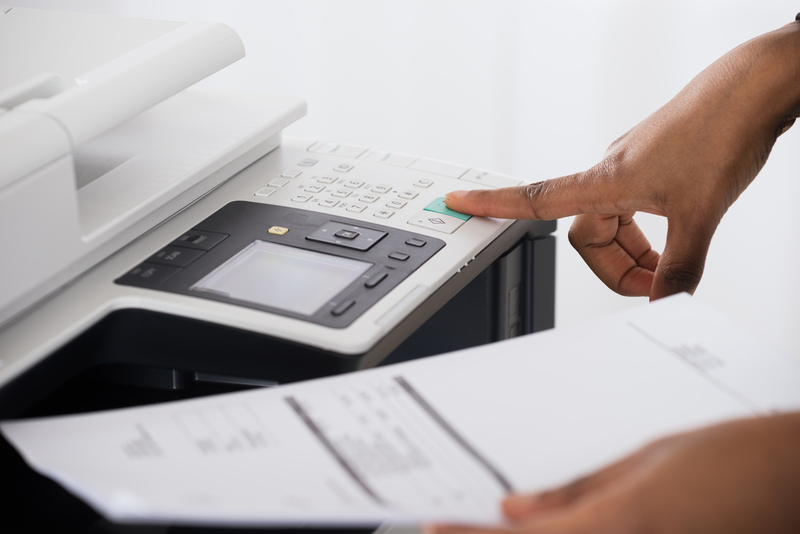Transforming Plastic Waste into Useful Items
Posted on 11/06/2025
Plastic has become an omnipresent material in modern life, thanks to its versatility, durability, and cost-effectiveness. However, its widespread use has also led to significant environmental challenges, particularly in waste management. The accumulation of plastic waste in landfills and oceans has created a need for innovative solutions to repurpose and recycle this material. Transforming plastic waste into useful items is one such solution that addresses both environmental and economic concerns. This article delves into various methods and initiatives aimed at converting plastic waste into valuable products.
The Extent of Plastic Waste Problem
Before exploring the solutions, it is essential to understand the magnitude of the plastic waste problem. According to the United Nations, more than 8 million tons of plastic end up in the world's oceans each year. This waste not only pollutes the marine environment but also poses a significant threat to wildlife. Additionally, landfills around the world are reaching capacity, with plastic waste contributing significantly to this issue. Given that plastics can take hundreds to thousands of years to decompose, the need for effective waste management strategies is urgent.

Traditional Recycling Methods
Traditional recycling methods for plastic generally involve mechanical recycling, where plastic waste is collected, sorted, cleaned, shredded, melted, and remolded into new products. While this process is effective to some extent, it has limitations. Not all types of plastic are recyclable, and the quality of recycled plastic can degrade over time, limiting its usability for new products. Furthermore, mechanical recycling can be energy-intensive and may not be feasible in areas lacking proper infrastructure.
Innovative Approaches to Plastic Recycling
Given the limitations of traditional recycling, various innovative approaches have emerged to tackle the plastic waste crisis more effectively. These methods not only aim to recycle plastic but also to transform it into valuable and functional items.
Chemical Recycling
Chemical recycling is a process that breaks down plastic waste into its basic chemical components. Unlike mechanical recycling, chemical recycling can handle a broader range of plastic types and can produce high-quality materials comparable to virgin plastics. The process involves converting plastics back into monomers or other chemicals, which can then be used to manufacture new plastic products or other materials. This method offers a more sustainable and efficient solution to plastic waste management.
Upcycling
Upcycling is another innovative approach that transforms plastic waste into products of higher value and utility. Unlike traditional recycling, which often results in lower-quality materials, upcycling aims to create items that are useful, durable, and aesthetically pleasing. Examples of upcycled plastic products include furniture, fashion items, construction materials, and even art pieces. Upcycling not only helps reduce plastic waste but also promotes creativity and innovation.
Case Studies of Transforming Plastic Waste
Several organizations and initiatives around the world have successfully transformed plastic waste into useful items, demonstrating the potential of innovative recycling methods.
The Ocean Cleanup
The Ocean Cleanup is a non-profit organization that aims to remove plastic waste from the world's oceans. The collected plastic waste is then recycled and transformed into high-quality consumer products. The initiative has developed advanced technologies to efficiently capture and process ocean plastic, turning it into items like sunglasses, with all profits reinvested into cleanup efforts.
Precious Plastic
Precious Plastic is a global grassroots movement that provides open-source tools and knowledge to help people transform plastic waste into valuable items. The project offers blueprints for building low-cost plastic recycling machines, enabling individuals and communities to start their own recycling initiatives. Precious Plastic has empowered countless people to turn plastic waste into products such as tiles, furniture, and home decor, fostering a culture of sustainability and innovation.
The Role of Technology
Advancements in technology play a crucial role in transforming plastic waste into useful items. Cutting-edge technologies such as artificial intelligence, robotics, and blockchain are being leveraged to enhance the efficiency and effectiveness of plastic recycling and upcycling processes.
Artificial Intelligence and Machine Learning
Artificial intelligence (AI) and machine learning (ML) are being used to improve the sorting and classification of plastic waste. These technologies can analyze and identify different types of plastics with high precision, streamlining the recycling process and reducing contamination. AI and ML can also optimize recycling operations, making them more cost-effective and sustainable.
Robotics
Robotics technology is being employed to automate various stages of plastic recycling, from collection to sorting and processing. Robots equipped with advanced sensors and algorithms can handle plastic waste more efficiently and safely than human workers, increasing productivity and reducing operational costs. Robotics also enables the recycling of plastics in hazardous environments, such as landfills and oceans.
Blockchain
Blockchain technology is being explored to enhance transparency and traceability in the plastic waste supply chain. By recording every step of the recycling process on a decentralized ledger, blockchain can ensure that plastic waste is properly managed and converted into useful items. This technology can also facilitate secure and efficient transactions between stakeholders, promoting collaboration and accountability.

Challenges and Future Directions
While significant progress has been made in transforming plastic waste into useful items, several challenges remain. One of the primary obstacles is the lack of standardized regulations and policies to support innovative recycling initiatives. Additionally, the high costs of advanced recycling technologies can limit their accessibility and scalability.
To overcome these challenges, governments, businesses, and communities must collaborate to create a conducive environment for plastic recycling and upcycling. Investments in research and development, along with public awareness campaigns, can drive innovation and adoption of sustainable practices. Moreover, policies promoting extended producer responsibility (EPR) and circular economy principles can incentivize businesses to minimize plastic waste and invest in recycling initiatives.
Conclusion
Transforming plastic waste into useful items offers a promising solution to the global plastic waste crisis. Through innovative recycling methods and technologies, it is possible to create valuable products while reducing environmental impact. As awareness and support for these initiatives grow, we can look forward to a future where plastic waste is not a problem but a resource for sustainable development.
By embracing innovative approaches and fostering collaboration, we can transform plastic waste into a valuable asset, contributing to a cleaner, healthier, and more sustainable world.


 office@benandjerry.org.uk
office@benandjerry.org.uk https://benandjerry.org.uk/
https://benandjerry.org.uk/

